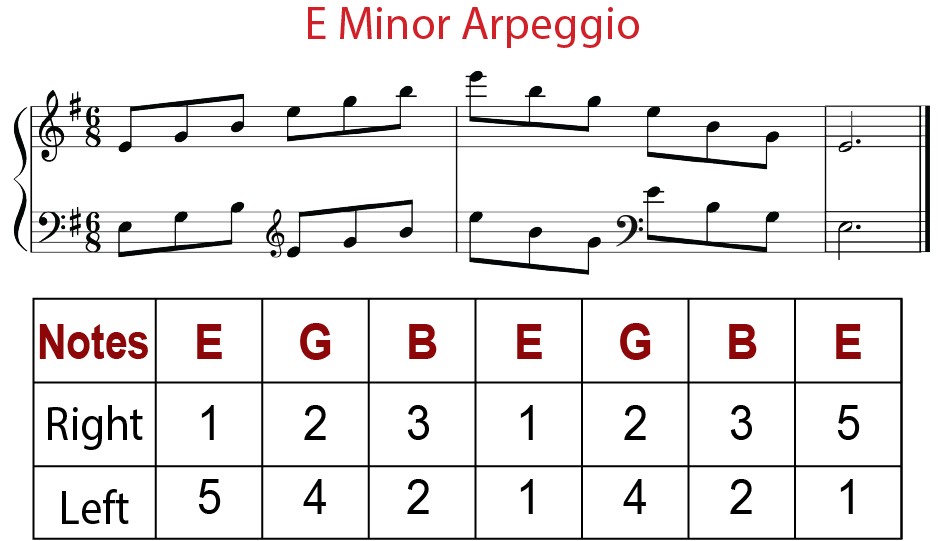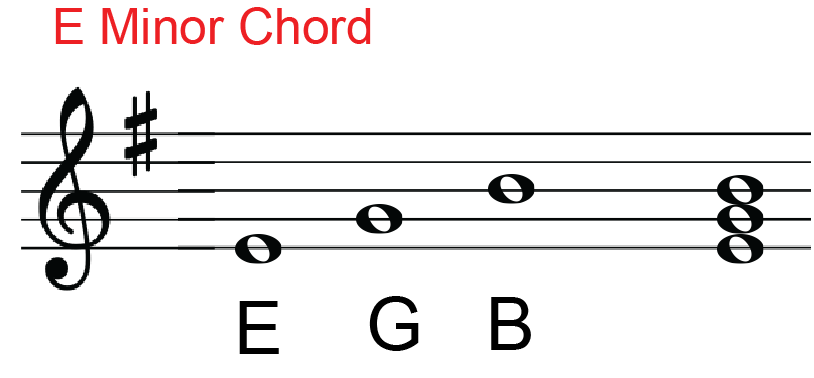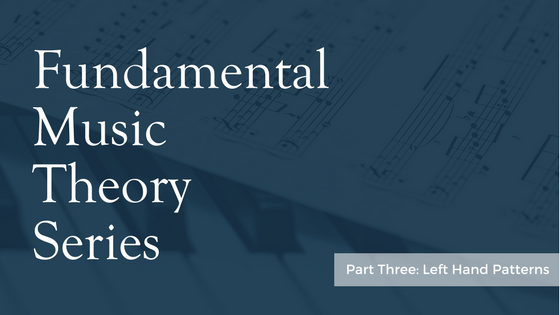Last week we spoke about arpeggios, also known as broken chords, and how prevalent they are in my own music. We used the key of E minor as an example. Today we are going to expand a bit on hand patterns.
As you may or may not know, I’m left handed and the left hand is the engine of a lot of my pieces. I also see patterns when I look at a keyboard. As I was writing the music for my song ‘Dark Night of the Soul’ I saw patterns emerge in that piece, starting very simply and then expanding using varying accompaniment patterns in the left hand.
So to recap from last week, here’s what an E minor arpeggio can look like below…


The arpeggio is using…
E or i is the tonic or root of the scale.
G III Mediant
B V Dominant


Now here’s a typical left hand pattern in my own music in the key of E minor…


The first bass clef measure reads
E B E B F# B E B E B F# B
These notes are the root/tonic and the dominant of the E minor scale/arpeggio. With the exception of F#. That is the second degree of the E minor scale also known as the supertonic.
The second bass clef measure is built off a C major scale/arpeggio/triad. The notes in the second measure above read as follows C G C G D G C G C C
These notes are the root/tonic and the dominant of the C Major scale/arpeggio. With the exception of D. That is the second degree of the C Major scale also known as the supertonic.
Another common pattern found in my music looks like this…


E B E G B E E G B E B G
The notes include the degrees of the scale Root/Tonic, Dominant, Mediant.
Keep practicing these left hand patterns in E minor and C Major. Try practicing them in different octaves too. Start slow and build your speed gradually. Before you know it, you’ll be able to play these patterns with your eyes closed.
Next time we’ll discuss some more fundamentals of music theory as it relates to my music.
Until then, happy playing!
Philip Wesley
Solo Piano Artist



